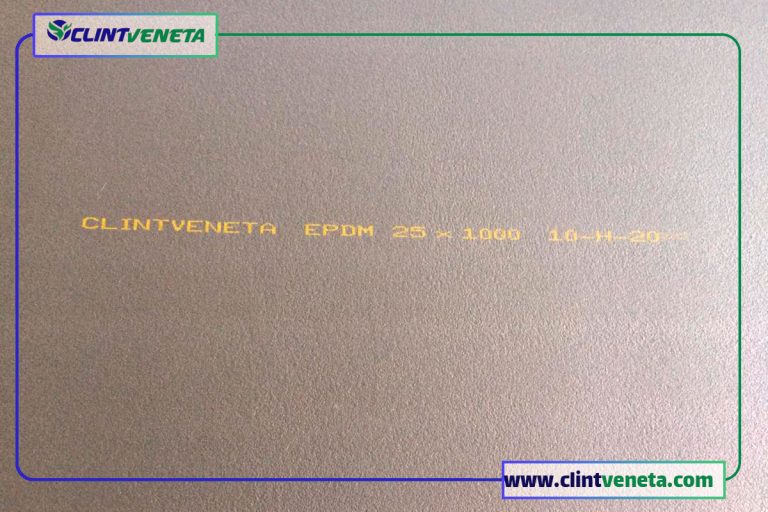EPDM and NBR elastomeric foam insulation
Today, one of the main concerns of human beings is to preserve natural energies and prevent their wastage. Therefore, preventing the loss of thermal energy in buildings is important. Proper insulation of ceilings, floors and walls, etc. in the building can greatly prevent the loss of heat and cold energy. One of these insulators is EPDM and NBR elastomeric foam insulation, which as we mentioned in the article types of elastomeric insulation, these types of insulators have many advantages over other insulators that you can read about in the mentioned article.
Elastomeric insulators have long been made of NBR and are called NBR elastomeric foam insulators. In addition, there is EPDM elastomeric insulation, which has been introduced to the industrial market in the solar industry since the late 1990s. These two types of elastomeric insulation are very similar in structure, but there are some differences that we will examine in the following. More than 90% of the elastomeric foam products in the world are based on NBR products.
Both types of elastomeric insulation are resistant to UV and have high flexibility, and in general it can be said that in many properties such as mechanical structure, ease of installation, thermal conductivity, etc. are similar and have no difference from each other. The difference between them is in the polymer used in them, which causes some differences in the degree of flexibility at different temperatures, coefficient of friction, and so on.
Similarities of NBR and EPDM elastomeric foam insulation
Environmentally friendly
These insulators are completely free of any toxic substances and have no respiratory or skin problems at all, and as a result, they are completely compatible with the environment.
Production size
NBR and EPDM elastomeric foam insulation are produced in the same sizes.
Flame rate and smoke rate
According to the ASTM E84 test, both have the same flame rate and smoke rate, but EPDM fire resistance is slightly higher than NBR.
Corrosion resistance
One of the main reasons that elastomeric insulation is one of the most popular insulations in facilities is that the raw materials and the mechanism of action of these insulators prevent corrosion under them. Of course, it should be noted that the installation of insulation by an expert also has a great impact on this issue.
In general, if insulation is used on stainless steel pipes or low temperature copper pipes, it will not corrode at all, but it is better to insulate steel pipes with high heat before insulating pipes with corrosion and rust resistant coating. Be protected so that no more problems occur.
Thermal conductivity
Because NBR and EPDM insulators both have the same cellular structure, their thermal conductivity is the same.
Differences between these insulators
The difference between NBR and EPDM elastomeric foam insulation specifications is always debated among experts in this field. But in general it can be said that EPDM can be better than NBR in some special cases.

For example, one of the main differences can be that EPDM foam insulation is more resistant to very high or very low temperatures than NBR and is therefore very suitable for use in extreme heat or cold.
Instead, NBR insulators are more resistant to mineral oils, vegetable oils, gasoline, and aromatic compounds and hydrocarbons than mineral oils, vegetable oils, gasoline, and aromatic compounds and hydrocarbons to EPDM.
NBR elastomeric insulation is widely used in refrigeration systems, roof insulation of sheds, solar energy devices, building installations, shipbuilding, air conditioning, oil and gas and petrochemical industries because this elastomeric foam in thicknesses higher than 20 The millimeter can also act as sound insulation up to 32 decibels.
EPDM can withstand temperatures from minus 60 degrees to positive 300 degrees Fahrenheit, and its high resistance to heat, ultraviolet radiation and oxidation has led to the use of this insulation in the manufacture of many outdoor waterproof industrial gaskets.
EPDM foam insulation is also used in weather insulation due to its long life in severe weather conditions and high flexibility and electrical insulation, and reduces the amount of noise and dust ingress.
In general, NBR elastomeric foam insulation is suitable for high humidity, adverse weather conditions, corrosive gases and chemicals, and EPDM elastomeric foam insulation is suitable for resistance to high heat, sunlight, ozone depletion and open and non-indoor environments.
You can visit the Clintveneta product store page to purchase NBR or EPDM elastomeric foam insulation for your needs and contact us to purchase or get more information.